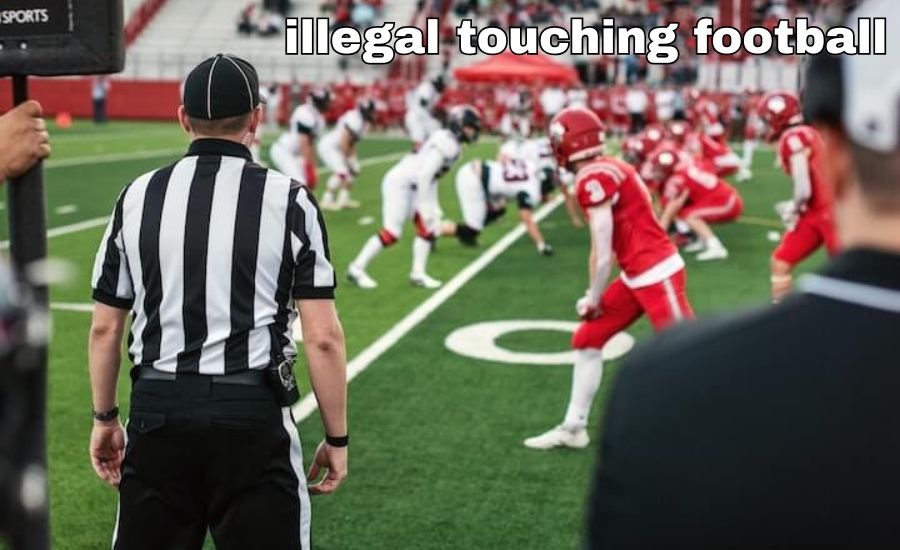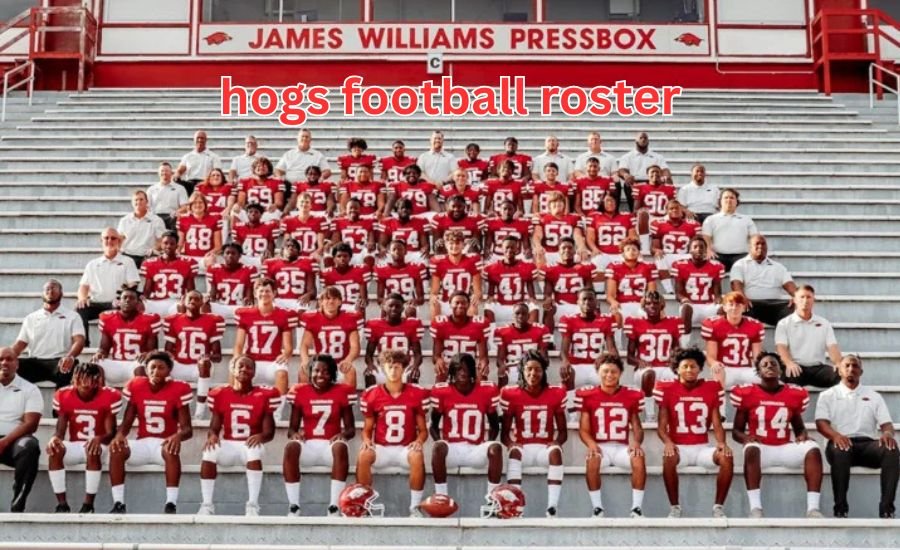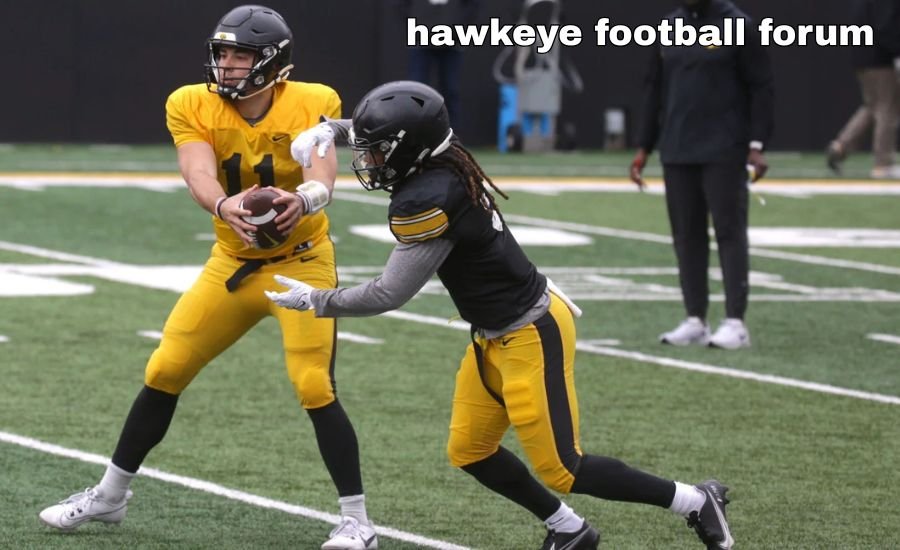In the fast-paced world of American football, rules are everything. They keep the game fair, balanced, and safe for players. One such rule that often stirs confusion among fans and even players is illegal touching football. Though not as frequently discussed as offsides or pass interference, touching football can dramatically affect the outcome of a play or an entire game.
This article is a complete guide to what touching football means, how it happens, why it’s penalized, and its impact on both offensive and defensive strategy. Whether you’re a coach, a young athlete, or a curious fan, this in-depth breakdown will help you grasp everything about illegal touching football.
What Is Illegal Touching Football?
Illegal touching football occurs when a player who is not eligible to catch or touch a forward pass does so. The NFL, NCAA, and high school football levels all enforce variations of this rule, but the concept remains consistent.
In most cases, offensive linemen (who wear jersey numbers between 50 and 79) are not allowed to touch a forward pass. If they do, it’s a foul. This is especially relevant during passing plays when ineligible receivers are downfield.
For example, if an offensive lineman goes downfield and touches a pass that was intended for a wide receiver, that’s illegal touching football. The penalty usually results in a loss of down and sometimes yardage, depending on the league’s rulebook.
The Origins and Purpose of Illegal Touching Football Rules
To understand why touching football exists, we must look back at the roots of the sport. Early football did not clearly define roles between players, and trick plays were often abused. Teams would send linemen downfield to confuse defenders and create unfair advantages.
touching football was introduced to prevent this kind of deceptive play. The goal is to maintain a clear distinction between eligible and ineligible receivers. This rule ensures that quarterbacks cannot throw to linemen unless they report as eligible before the play.
By enforcing touching football, the game maintains fairness and strategic integrity. It also protects defenses from having to cover players who are not expected to be pass-catching threats.
Who Is Considered an Eligible Receiver?
Understanding eligibility is critical to avoiding illegal touching football penalties. In American football, eligible receivers include:
- Wide receivers (WR)
- Tight ends (TE)
- Running backs (RB)
- Quarterbacks (QB)
- Any player lined up on the end of the line or in the backfield, wearing eligible numbers (usually 1–49 or 80–89)
Offensive linemen, including guards, tackles, and centers, are generally ineligible unless they report to the referee before the play begins. Without such a report, any attempt to catch or touch a forward pass results in illegal touching football.
Common Situations Leading to Illegal Touching Football
Illegal touching football can occur in a variety of game situations. Here are some of the most common:
Ineligible Player Downfield
A lineman runs downfield during a pass play and touches the ball. Even if the ball is tipped or deflected, it’s still touching football if he wasn’t eligible.
Quarterback Throwing to a Covered Lineman
Sometimes quarterbacks, under pressure, mistakenly throw to an ineligible receiver who happens to be open. This results in a touching football penalty.
Onside Kicks and Recovered Punts
While this is a slightly different rule, illegal touching also applies on special teams. If the kicking team touches the ball before it travels 10 yards on an onside kick, it’s illegal touching football.
Impact of Illegal Touching Football on Gameplay
A single penalty for illegal touching football can ruin a well-planned offensive drive. Imagine a team facing 3rd and 5. The quarterback completed a 15-yard pass to convert, but an offensive lineman had accidentally caught the ball. The result? The play is nullified, and the team loses the game.
Defensively, understanding touching football can help create strategic advantages. Defenders may allow ineligible players to be open, knowing that touching the ball will result in a penalty.
The penalty also affects how offensive coordinators design plays. They must ensure ineligible players stay within their designated zones and don’t risk crossing the line of scrimmage on passing plays.
Illegal Touching Football in the NFL
In the NFL, touching football is taken seriously. The league enforces this rule with precision, especially due to the high-speed nature of professional games.
NFL rules state that if an ineligible receiver catches or touches a forward pass, the team is penalized five yards, and the down is lost. This often happens during screen plays or miscommunication during hurry-up offenses.
The NFL also uses advanced video review and referee communication to detect touching football in close-call situations.
Illegal Touching Football in College Football (NCAA)
College football operates under slightly different rules, but the illegal touching football rule is consistent. The penalty is usually five yards from the previous spot and a loss of down.
College coaches often drill their offensive line on the importance of staying behind the line of scrimmage and understanding who is eligible. Because the college game is often more chaotic than the NFL, illegal touching football happens more frequently.
Coaches even design special packages where linemen report as eligible to create surprise plays while avoiding touching football penalties.
High School Football and Illegal Touching
High school football teaches players the basics, including the rules of eligibility. touching football is enforced to educate young players about positioning and their responsibilities on the field.
At the high school level, officials often warn teams before calling touching football if they notice consistent issues. This allows coaches to correct mistakes and teach their players about eligibility rules.
Understanding illegal touching football at a young age helps players prepare for the more complex versions of the game in college and the NFL.
Features of Illegal Touching Football
| Feature | Description |
| Rule Definition | Occurs when an ineligible player touches or catches a forward pass. |
| Player Eligibility | Only specific positions (WR, TE, RB, QB) can legally catch a forward pass. |
| Jersey Number Rule | Players with jersey numbers 50–79 are typically ineligible to catch passes. |
| Pre-snap Reporting | Ineligible players must report to the referee if they intend to act as eligible. |
| Penalty Type | Results in a 5-yard penalty and a loss of down in most cases. |
| Game Situations | Commonly occurs during screen plays, broken plays, or onside kicks. |
| Level of Play | Enforced at NFL, NCAA, and high school levels with slight rule differences. |
| Strategic Impact | Can nullify big plays and disrupt offensive momentum. |
| Referee Involvement | Requires sharp referee attention and sometimes video review for confirmation. |
| Educational Value | Helps players learn discipline and understand their role in the game. |
How Coaches Prevent Illegal Touching Football
Preventing illegal touching football starts at practice. Coaches emphasize formation discipline and eligibility rules.
Here are a few ways coaches reduce touching football penalties:
- Film Review: Watching films to catch mistakes in formation.
- Position Drills: Teaching linemen to hold their ground.
- Reporting Mechanisms: Reminding players to report as eligible when necessary.
- Pre-snap Communication: Making sure players know their roles before the ball is snapped.
Good coaching helps players understand how to stay within the rules and avoid touching football during high-pressure plays.
Read More: Hogs-football-roster-forging-champions
The Psychological Side of Illegal Touching Football
touching football not only impacts the scoreboard but also the mental focus of a team. A big gain taken away due to this penalty can lower morale and affect rhythm.
Quarterbacks may hesitate when pressured, worrying whether the player they’re throwing to is eligible. Offensive linemen, too, must remain disciplined even during broken plays.
Avoiding touching football requires mental clarity, awareness, and practice. Teams that understand the rule perform better under pressure.
Technology and Illegal Touching Football
Modern tools like instant replay, referee headsets, and digital coaching aids help enforce the illegal touching football rule more accurately.
For example:
- Video Review: Helps confirm whether a lineman was eligible.
- Helmet Communication: Quarterbacks are warned by coaches about eligible targets.
- Analytics: Teams track how often touching football happens and create systems to reduce it.
These advancements make it easier to detect and avoid touching football in real-time.
Illegal Touching vs Ineligible Downfield Receiver
A common confusion is the difference between illegal touching football and having an ineligible receiver downfield. While they seem similar, they are different penalties.
- Illegal Touching Football: Happens when an ineligible player touches or catches the ball.
- Ineligible Receiver Downfield: Occurs when an ineligible player goes beyond the line of scrimmage during a pass play even if they don’t touch the ball.
Both carry penalties but serve different purposes. Coaches and players must understand both to avoid costly mistakes.
Controversies and High-Profile Cases
Over the years, touching football has made headlines in controversial games. One example involved a crucial playoff game where a touchdown was overturned due to a lineman touching the ball illegally.
Such moments become turning points in major games and often spark debates among fans and analysts. They highlight the importance of rule awareness and how a single illegal touching football call can shape sports history.
Benefits of the Illegal Touching Football Rule
- Maintains Fair Play
The rule helps ensure that only eligible players can catch passes, keeping the game fair and preventing sneaky or misleading tactics. - Protects Defensive Integrity
Defenders don’t have to guard every player on the field, especially linemen, reducing confusion and ensuring strategic balance. - Improves Game Structure
By clearly defining who can and cannot touch the ball, the rule keeps the game structured and easier to follow for both players and fans. - Enhances Player Discipline
Players learn to stay within their assigned roles, increasing focus and teamwork while minimizing unnecessary penalties. - Promotes Safer Play
Prevents dangerous situations where linemen unexpectedly engage in receiving plays, which could result in injuries due to positioning. - Supports Coaching Strategy
Coaches can design more reliable plays, knowing that certain players must stay behind the line and avoid becoming eligible pass targets. - Improves Officiating Accuracy
The rule gives referees clear criteria for calling fouls, reducing ambiguity and increasing consistency in rule enforcement. - Reduces Unfair Advantages
Prevents offenses from creating confusion by using ineligible players as surprise receivers, promoting a level playing field. - Teaches Rule Awareness Early
At high school and college levels, it helps young players understand the fundamentals of eligible and ineligible positioning. - Adds Strategic Depth
Teams can still use eligible-reporter plays for creativity, but must plan carefully adding a layer of tactical challenge and excitement.
Illegal Touching Football and Fairness in the Game
At its heart, touching football is about fairness. It ensures all players play within defined roles and prevents deceptive trickery that could give one team an unfair advantage.
By holding players accountable, the rule helps protect the integrity of football. It promotes honest competition and ensures defenses are not overwhelmed by unexpected play styles.
How Referees Spot Illegal Touching Football
Referees are trained to identify illegal touching football instantly. Here’s how they do it:
- Number Recognition: They memorize ineligible numbers and track their movement.
- Line of Scrimmage Monitoring: They observe who crosses and who remains behind during the snap.
- Ball Contact Observation: If a flagged player touches the ball, the call is automatic.
In case of doubt, video replay is used to confirm touching football.
Tips for Players to Avoid Illegal Touching Football
Players can take steps to avoid this penalty:
- Know Your Role: Always understand your position’s eligibility.
- Report When Eligible: Let the referee know if you’re lining up to catch passes.
- Stay Disciplined: Even during broken plays, don’t chase the ball.
- Listen to Coaches: Follow the game plan to stay legal.
Avoiding illegal touching football takes awareness and practice.
Conclusion
So now you know what touching football means! It’s when a player who is not supposed to touch the ball does it anyway. This rule is very important because it keeps the football game fair. It helps teams play by the rules and stops people from doing tricky plays that are not allowed. Players must know who is allowed to catch the ball and who is not. If they break the rule, the team loses yards and the down too. That can hurt a team’s chance of scoring a touchdown. So, coaches always teach players about this rule. Knowing the rules helps everyone enjoy the game more and makes it fun to watch.
In football, following the rules is just as important as running fast or throwing the ball. The illegal touching football rule teaches players to stay in their right spots and work as a team. Even one small mistake can change the whole game! That’s why learning this rule at a young age helps players as they grow. It also makes fans understand the game better. Now, next time you watch a football game and hear the ref call “illegal touching,” you’ll know exactly what that means! Keep learning, keep watching, and most of all have fun with football.
Do You Know: Hilliard-davidson-football-pride-power
FAQs
What is illegal touching football?
It’s a penalty where an ineligible player touches a forward pass.
Who is considered ineligible?
Usually offensive linemen unless they report as eligible.
What is the penalty for illegal touching football?
A 5-yard loss and loss of down in most leagues.
Can a quarterback commit illegal touching?
Rarely, unless they receive their own illegal pass back.
Is illegal touching football the same as ineligible downfield?
No, illegal touching involves ball contact, while the other is about positioning.















